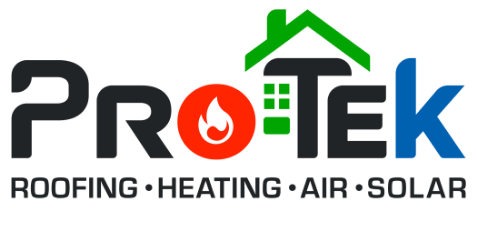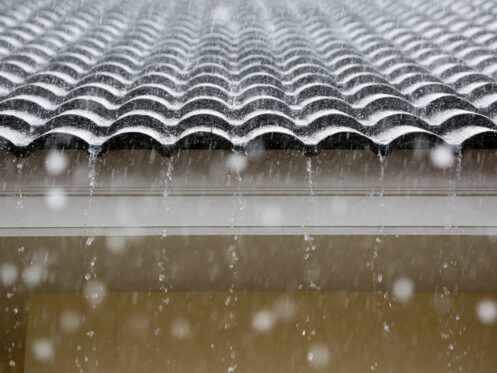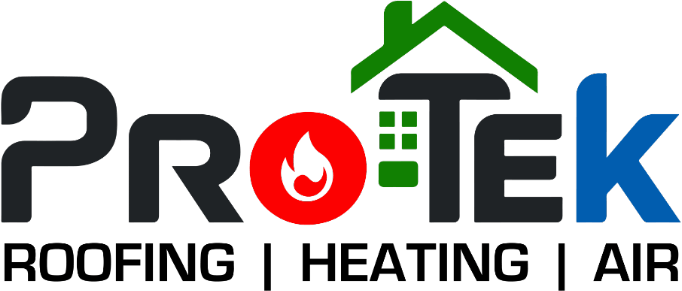Although Florida winters tend to be milder than the rest of the country, you can still expect temperature changes. Cooler temps can have an impact on your home, especially its roof, and if you want to ensure your home is structurally sound during the winter months, you should start with your roof. Preparing your roof for winter doesn’t have to be difficult, especially if you hire a professional roofing company like Protek Roofing, Heating, Air & Solar in Tampa, FL, and the surrounding area. Here are 10 ways to get your roof ready for the Florida winter.
1. Look for Damaged or Loose Shingles
Damaged, missing, or loose shingles can predispose your roof to water damage and leaks if you don’t repair them before winter. If your shingles are damaged, water can seep underneath and eventually find its way into your home. If your home has loose shingles, the strong winter wind can blow them away with ease. Even if you only have a few damaged shingles, you should probably hire a professional to replace them. This is especially true if there is more than one area of your roof that is damaged.
2. Check Your Roof’s Caulk
If you want to prepare your roof for the winter, you will need to check the caulk (sealant) around your vent pipes, counter-flashing, and chimneys. You will especially want to check around your counter-flashing, which is the metal sheet installed at the joint between the walls of your home and its roofing. Counter-flashing serves to stop water from seeping between the joint by channeling it away.
During the colder winter months, components of your roof can shrink, and caulking can separate if it is dry and old. New caulking can handle the expanding and contracting caused by the cold weather much better, which will keep the critical junctures of your roof dry and free of water. New caulk retains its seal and suppleness better once it is cured.
3. Remove Snow
You can use a roof rake to remove snow and prevent it from accumulating on your roof. Ideally, you should rake your roof after every six inches of snowfall. By removing snow from your roof, you can create a path for melted snow to flow off the roof. If you don’t do this, the melted water can freeze and cause leaking and ice dams. Using a roof rake can be intimidating if you’ve never been on top of your roof before, so it may be best to call a professional.
4. Clean Your Gutters
Although they are not technically part of your roof, your gutters play a vital role in protecting your roof. Gutters collect rainwater and direct it away from your home, which prevents water from pooling near the foundation. Unfortunately, when your gutters get clogged, they can cause numerous problems. Clogged gutters can allow pests to enter your home and trap water, which can eventually damage your roof.
During winter, trapped water inside your gutters can form damaging ice dams. This heavy ice can cause your gutters to detach from your roof, causing extensive damage and leaving your entire home vulnerable to water damage. Before winter, hire a roofing company to be sure your gutters are free of twigs, dirt, leaves, and other types of gunk that have been collected.
5. Insulate Your Attic
Believe it or not, your attic is considered a significant part of your roof. When your attic is correctly ventilated, air can flow freely. Free-flowing air is immensely important because it allows for the regular distribution of warm and cold air. Improper airflow can result in structural damage to your roof.
You should also make sure your attic has sufficient insulation. A lack of insulation can result in ice dams forming on your roof. Insulation can also protect your attic space and roof from moisture and make your home more energy efficient. This can help you reduce your energy costs from month to month.
6. Remove Microorganisms
Microorganisms, such as algae, moss, and lichen are one of the biggest threats to your roof. Although they typically manifest as tiny patches on your roof, they can cause extensive damage. Moss is a green-colored plant-like structure that distributes its roots inside your roof. Its roots can eventually cause leaks and damage to your roof decking. Lichen is white, and when it is in the same space as moss, the two microorganisms can work together to destroy your roof.
Black algae is another detrimental organism that often grows on roofs. Although it looks like a large pile of dirt, it is actually feeding and living off your shingle’s granules. Before winter sets in, have a professional clean your roof to minimize microorganism damage.
7. Prune Tree Branches and Limbs
Low-hanging branches can hit your roof during high winter winds, which can cause damage to your shingles. Weak limbs can also fall onto your roof and cause structural damage. To prevent this from occurring, you will need to have the limbs and branches of the trees surrounding your home pruned, especially if they hang in close proximity to your roof. Removing limbs yourself can be dangerous, and if done incorrectly, it can impact the structural integrity of the tree and cause it to fall over. For this reason, it is wise to hire a roofing professional to prune your trees for you.
8. Schedule a Professional Roof Inspection
When was the last time you had your roof inspected? If you haven’t had your roof inspected by a professional in a while, it may be time to schedule an inspection. This is especially true if you suspect your roof may have issues or be damaged. Having a trained professional eye taking a close look at your roof can be immensely beneficial. If a problem is detected, a solution can be offered that will save you a considerable amount of time and money. A roofing expert understands how important your roof is to your home’s structure and can make sure it is healthy enough to withstand cold winter temperatures.
9. Check for Leaks
You will want to have your roof inspected for potential leaks. Your chimney’s flashing, which is the strip of metal sealing the intersection of your chimney and roof, is one of the main spots for roof leaks. Often, leaky flashing is mistaken for a leaky roof. When you hire a roofing professional, they can make sure your flashing isn’t damaged or loose and that the caulk holding it in place hasn’t deteriorated over time.
Your attic may also exhibit signs of water damage, and often, roof leaks can first be seen in the attic. Signs of a leaky roof can include water spots on your attic’s wall, water puddles on the floor, and wet roof decking.
10. Examine Your Roof’s Valleys
The low spots on your roof where two slope sections connect are called valleys. These valleys are sometimes covered with V-shaped metal strips, and they can be prone to leaking. To prevent leaks, you will want to be sure the valleys of your roof haven’t sustained a significant amount of wear and tear. Metal roof valleys can corrode and rust over time when they come in contact with the elements, and all valleys can retain moisture that can give rise to mold. Always remember to have your roof’s valleys inspected closely.
Learn More
If you live in the Tampa, FL area and are ready to get your roof in shape for winter, Protek Roofing, Heating, Air & Solar is here to help. We understand the importance of having a structurally sound roof that protects your home from the elements, and we are committed to providing exceptional roofing services. Aside from our roofing services, we also offer heating and cooling repair, installation, and maintenance. We can improve your indoor air quality and install solar panels on your roof too. Contact us today to learn more.




